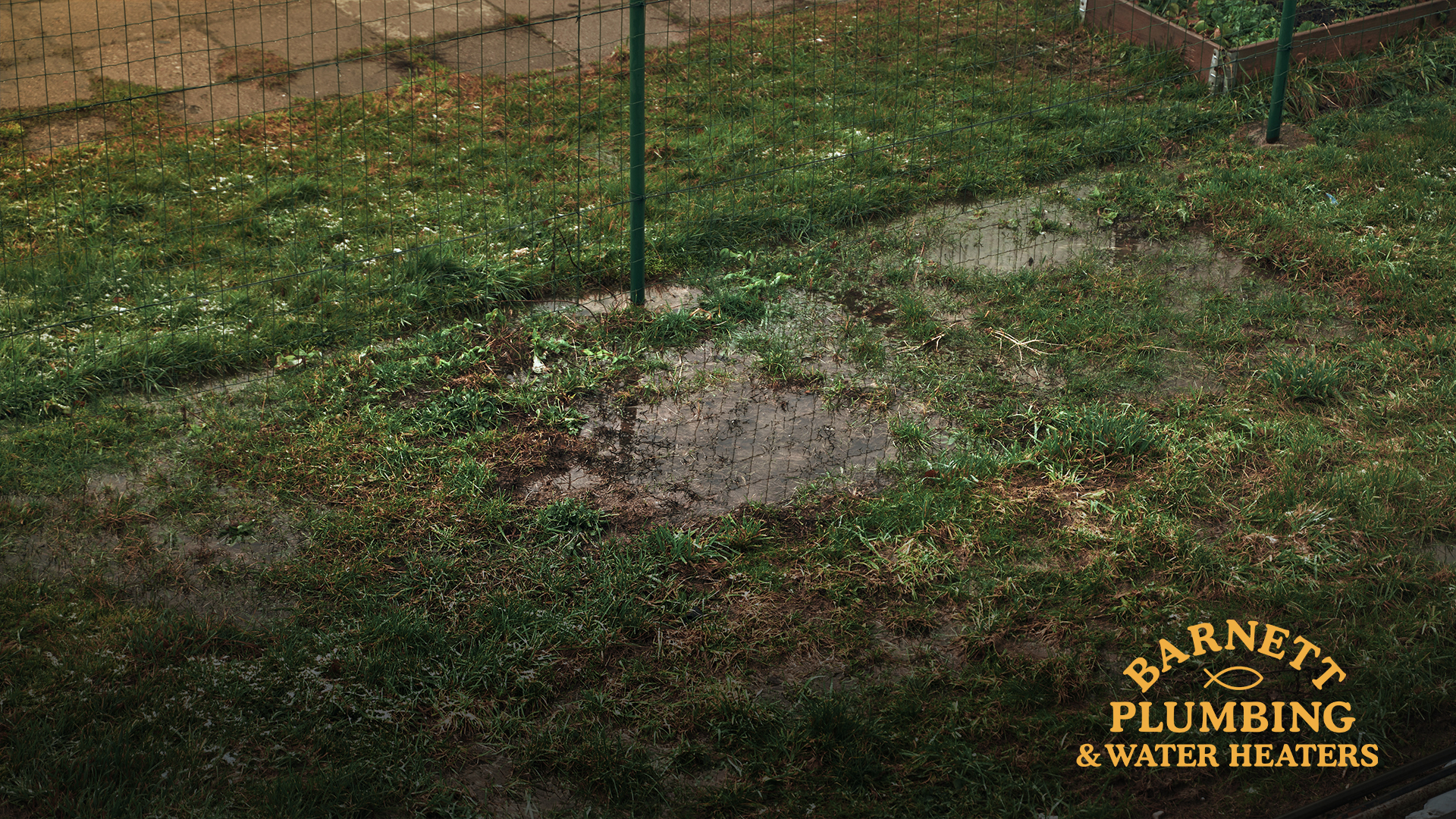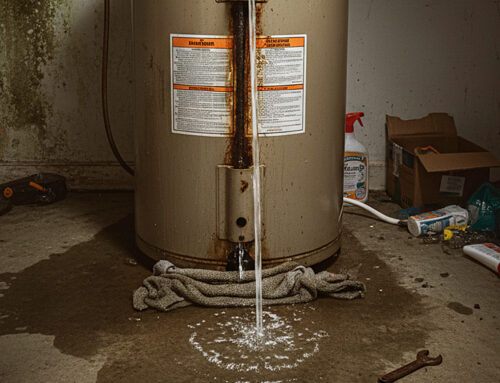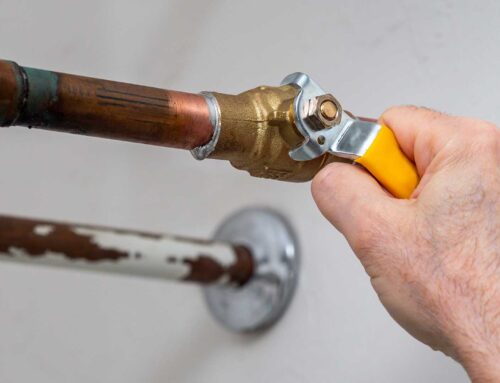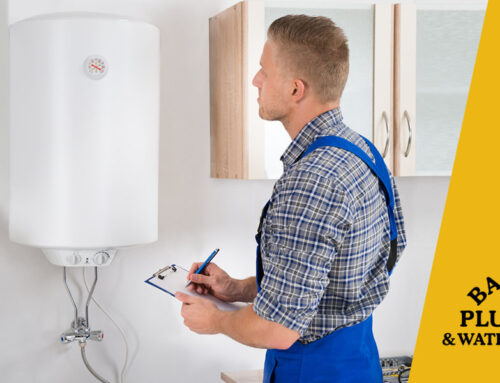When everything is working properly, your sewer system seamlessly carries waste away from your property. You hardly even notice it is there. When your septic system isn’t working optimally, it can really stink. (Often literally.)
Knowing the warning signs of sewer pipe failure and your replacement options before disaster strikes can save you from costly emergencies, serious property damage, and a gross mess to clean up.
4 Common Warning Signs of Sewer Pipe Failure
Most of the time, sewer lines start showing signs of wear and tear before they fully give out. Here are four common signs to watch for so that you can catch sewer line damage before it turns into a full-blown disaster.
Persistent Drain Problems
When multiple drains in your home back up simultaneously, it’s rarely a coincidence. Single drain clogs happen but when your entire plumbing system seems to struggle, it is likely due to sewer line issues.
If you notice your sink gurgling when you run the washing machine, or your tub fills with sewage when you flush the toilet, it’s time to schedule a professional evaluation.
Unpleasant Odors Around Your Property
If your septic system is working correctly, you shouldn’t notice any sewer odors in your home or yard. If you do detect persistent foul odors, especially around your home’s perimeter or in your basement, cracked or damaged sewer lines might be the culprit. When sewer lines are cracked, gases escape. Those smells are warning signs that all is not well. They often get worse during hot weather or after heavy rains.
Instead of planting extra flowers and placing air fresheners around your home, call a professional plumber to get your sewer system checked out.
Unexplained Wet Spots in Your Yard
Soggy patches in your lawn that don’t dry out, even during droughts and dry spells, could be a sign of a leaking sewer line underground. Especially if those wet areas follow your sewer line’s route from your home to the street.
You may also notice unusually lush, green grass growing above your sewer line. Sewage acts as fertilizer, causing the grass above it to look healthier and grow faster. Although extra beautiful grass doesn’t seem like a problem, it’s better to make sure there isn’t a bigger issue lurking underneath.
Foundation and Structural Issues
Leaking sewer lines can cause serious structural problems over time. These issues develop gradually as leaking sewage erodes the soil supporting your home’s foundation and hardscaping.
You’ll want to pay attention to any:
- Cracks in your foundation
- Settling or sinking areas around your home
- Driveway or sidewalk sections that have shifted or cracked
- Sinkholes or depressions in your yard
Consult with a professional to find the root cause of these structural changes before they get worse.
5 Steps to Sewer Line Replacement or Repair
If you suspect you’re dealing with leaks in your sewer line, following these steps will help make your sewer line repair or replacement less stressful.
Step 1: Get a Professional Camera Sewer Line Inspection
We always recommend starting with a professional camera inspection. This diagnostic tool provides a clear picture of your existing sewer line’s condition without any guesswork. It will give us a map of what sewer line repairs are needed and where.
What a Camera Inspection Reveals
During a camera inspection, a professional plumber will use a waterproof digital camera attached to a flexible cable to navigate through your entire sewer line.
This video inspection shows:
- Exact location of any cracks, breaks, or clogged pipes
- The severity and extent of tree root damage
- Your pipe’s material, condition, and age
- Any joint separation or misalignment
- Scale or grease buildup
- Corrosion levels
The Benefits of a Camera Inspection
Camera inspection takes the guesswork out of sewer line problems. Instead of digging exploratory holes or making educated guesses, we have precise information about your sewer system’s condition.
We will be able to give you a more accurate estimate so you can make an informed decision about whether to repair or replace your sewer lines. The inspection also creates a baseline record of your sewer line’s condition, which can be useful for insurance claims or future maintenance planning.
Step 2: Deciding Between Full Sewer Line Replacement vs Repair Options
If you have localized, minor damage, sewer line repair could be a valuable option. However, in many cases, full replacement is more cost effective. It ultimately depends on:
The Age of Your Sewer Lines and Pipe Material
If your Tri-Valley home was built before 1980 and still has the original sewer lines, replacing them is going to be more cost-effective than repeated repairs. Most of the sewer line materials used in older homes begin to wear out at around the 50 year mark.
If you know what pipe material was used in your home and when it was installed, you can use the information below to see how much longer your pipes could last.
Common Sewer Pipe Materials Used in Older Homes and Their Longevity:
- Cast iron: 50-75 years
- Clay: 50-60 years
- Orangeburg: 30-50 years
The Longevity of More Modern Drain Line Materials:
- HDPE: 50-100 years (used for sewer laterals)
- ABS: 50-100 years (used under homes)
Material Deterioration
Some pipe materials, particularly older cast iron and clay pipes, deteriorate throughout their entire length. Even if only one section shows obvious problems, the rest of the system will likely need attention soon.
Extensive Root Damage
Tree roots naturally seek water sources, making your sewer lines an easy target. Once roots penetrate the pipes, they continue growing and expanding, causing more and more damage with time. While small root intrusions can be cleared, extensive root damage usually requires full pipe replacement.
Multiple Problem Areas
If the camera inspection reveals damage in multiple sections of your sewer line, full replacement usually costs less than addressing each problem individually. Piecemeal repairs often lead to ongoing sewer issues as additional sections deteriorate.
When you replace the entire sewer line, you only disrupt the surrounding soil, landscaping and hardscaping once. New materials also come with warranties and longer lifespans, giving you peace of mind for years to come. Replacement may be a bigger project than a repair but you are saving yourself time and stress by doing it right the first time.
How Much Does it Cost to Replace A Sewer Line?
The cost to replace or repair sewer lines varies significantly. Factors that impact replacement costs include:
Distance and Depth: Longer sewer lines require more material and labor. Deeper installations require more excavation. Essentially, the more complex the job, the bigger the cost.
Accessibility: Lines running under driveways, patios, or landscaping cost more to access than those in open areas.
Pipe Material: Basic HDPE costs less than specialized materials designed for specific soil conditions or heavy-duty applications.
Local Permits: Most Tri-Valley municipalities require permits for sewer line replacement, which adds to project costs.
Restoration Requirements: After the sewer line replacement or repair project, you’ll need to repair any landscaping, driveways, or hardscaping disturbed or damaged during the installation.
Most plumbers and contractors provide detailed estimates breaking down material, labor, permit, and restoration costs. This transparency helps you understand exactly what you’re paying for so you can make informed decisions from the start. If you are near Livermore, CA, call Barnett Plumbing & Water Heaters at (925) 294-0171 for your free estimate.
Will insurance cover sewer line replacement?
Most standard homeowner’s policies don’t cover sewer line replacement due to normal wear and tear or aging. However, coverage might apply if the damage is from sudden, accidental or covered events like an earthquake or vehicle impact. The best way to find out for sure is to call your insurance company for verification.
If your home owners insurance doesn’t cover sewer line replacement or repair, there are a few other options to explore.
Sewer Line Insurance Riders
Many insurance companies offer optional sewer and drain backup coverage. These riders typically cost $40-$100 annually but can save thousands if you need major sewer work.
Home Warranty Plans
Some home warranty companies cover sewer line repairs, though coverage limits and exclusions vary. Review your warranty terms carefully to understand what’s included.
Step 3: Sewer Pipe Replacement
Did you know that you can replace a sewer line without digging up your entire yard? Modern technology has revolutionized sewer line replacement, making it possible to repair a broken sewer line or replace your sewer lines without making your yard look like the Grand Canyon.
Trenchless Sewer Repair Options
Trenchless sewer replacement and repair methods minimize disruption to your property. There are two ways to get the job done without creating a huge mess:
Pipe Bursting: This method uses a specialized tool to break apart the old pipe while simultaneously pulling new pipe into place. It requires small access points at each end, rather than digging a full trench.
Directional Boring: For new installations or when existing pipes can’t be reused, directional boring creates a new path underground with minimal surface disruption.
Instances When Traditional Excavation Is Necessary
We will always try to make your sewer line replacement as simple as possible but there are times when traditional dig-and-replace methods are needed. Traditional excavation makes more sense when you have:
- Severely collapsed pipes that can’t accommodate trenchless equipment
- Significant depth changes needed for proper slope
- Extensive landscaping or utility conflicts
- Local code requirements that only allow specific installation methods
If traditional excavation work is needed, we will outline the extent of the surface damage and roughly how long the process will take so that you don’t run into any surprises along the way.
Step 4: Testing Your New Sewer Lines
Once the main sewer line has been replaced or repaired, we will conduct some tests to make sure everything is working properly.
- Pressure and Flow Testing: The new sewer line is tested under pressure to make sure there are no leaks or weak points in the system.
- Camera Inspection: We do a final camera inspection to verify the pipe is properly installed, aligned, and free of obstructions.
Step 5: Restoration
The final step is to get your yard, landscaping, and hardscaping back to normal. This includes:
-
- Filling Excavated Areas: Our team will re-fill in any trenches or access holes we created so your yard is safe to walk or play on.
- Landscaping Repairs: We will replace any grass, plants, or other landscaping that was disturbed. We also partner with a trusted contractor to repair any big damages.
- Hardscape Restoration: We will provide you with options for our contractor to repair any driveways, sidewalks, or patios that were disturbed.
If you’d rather use your own trusted, licensed and insured contractors to get your landscaping and hardscaping restored, that option is available as well.
Don’t Let Sewer Line Damage Get Worse
We know you don’t have time to let sewer line problems disrupt your life or damage your property. If you’ve noticed any of these four sewer line red flags, call Barnett Plumbing & Water Heaters at (925) 294-0171 today for a camera inspection today. Taking proactive action at the first sign of sewer line issues protects your home, lowers your stress, and often saves you money.
You can trust that our team of home repipe experts will never try to sell you a product or service you don’t need. We’re your fast, friendly, follow-through pros! With Barnett Plumbing & Water Heaters you get clear answers and high-quality workmanship, every time.

